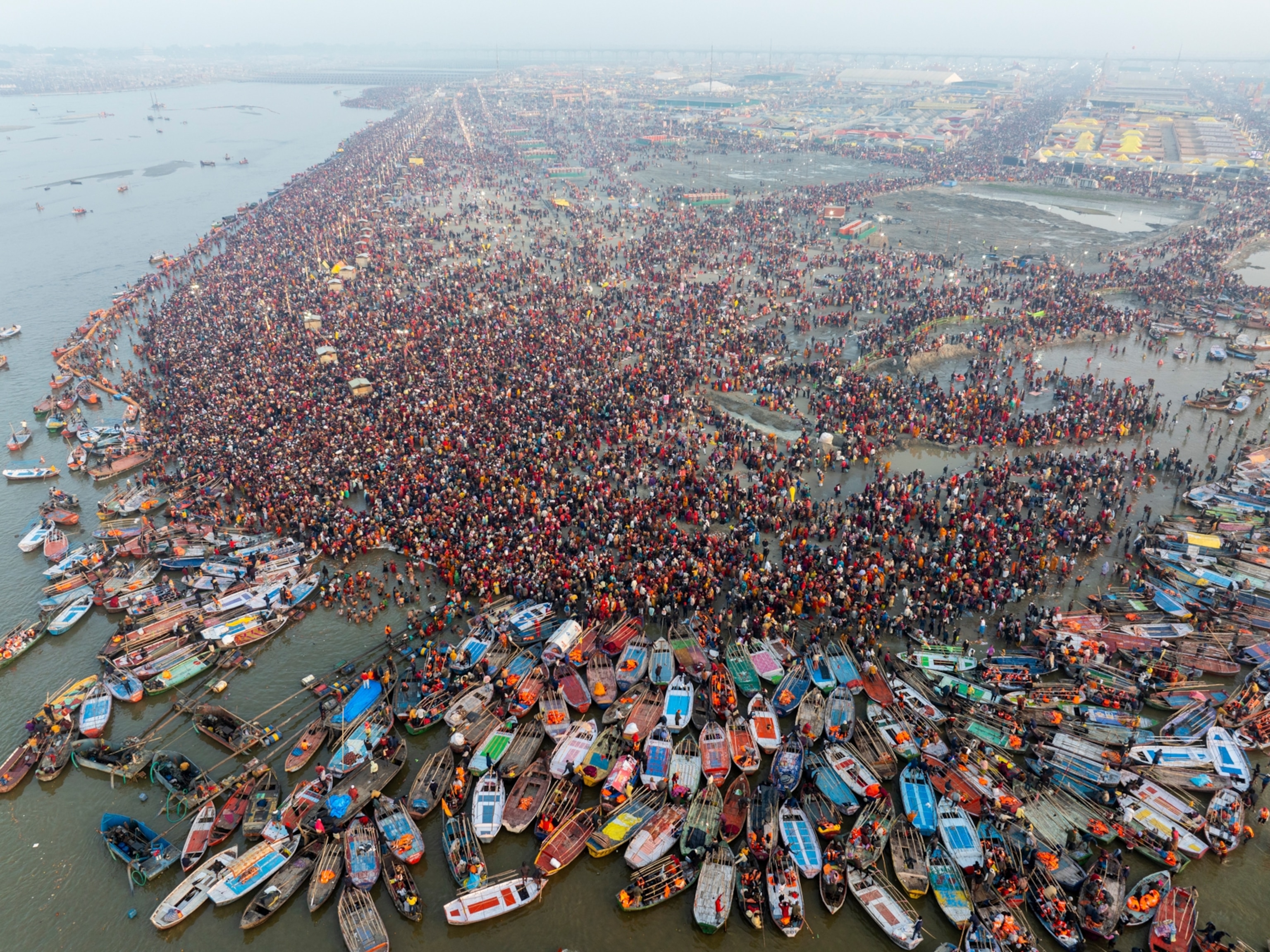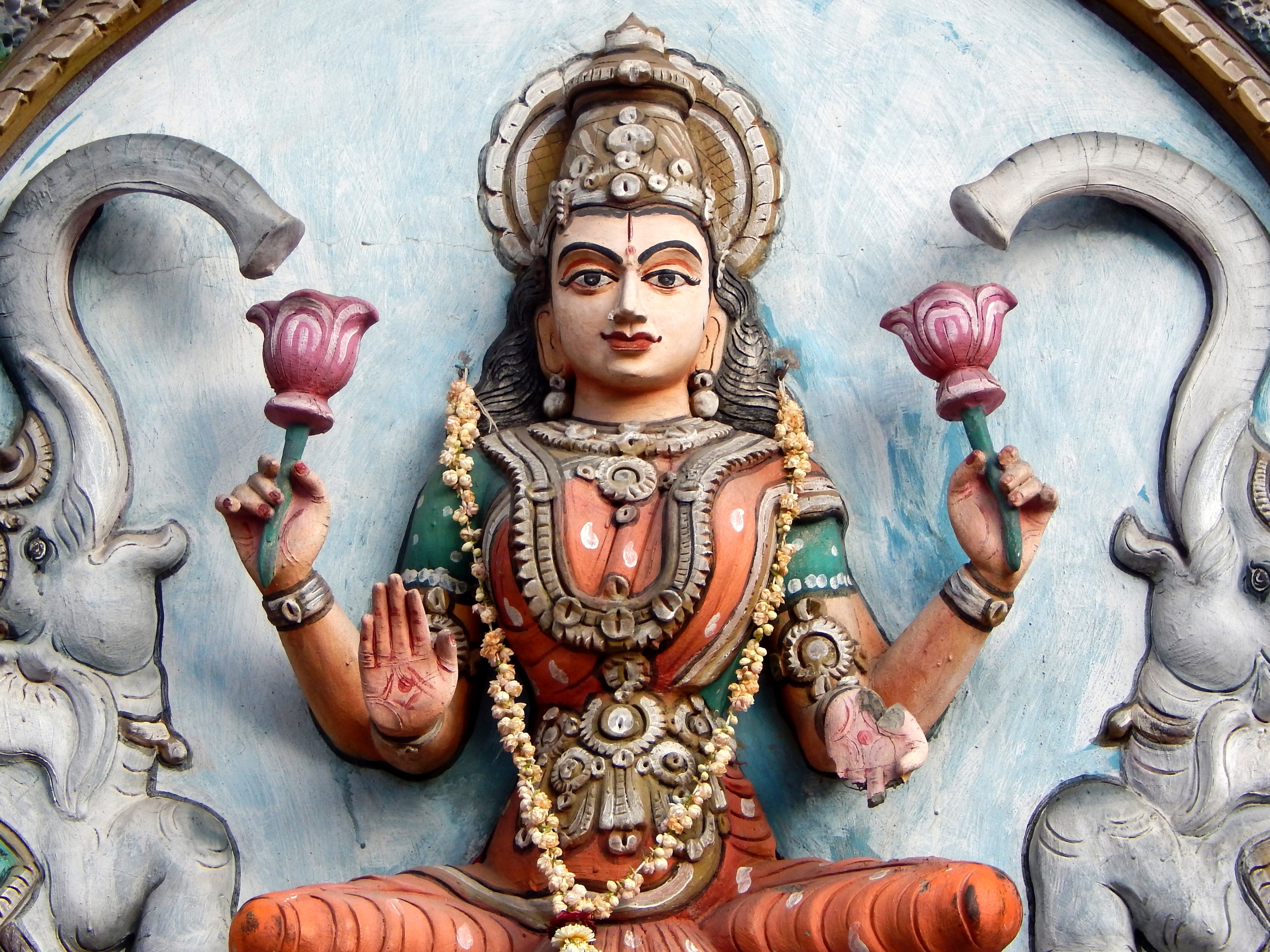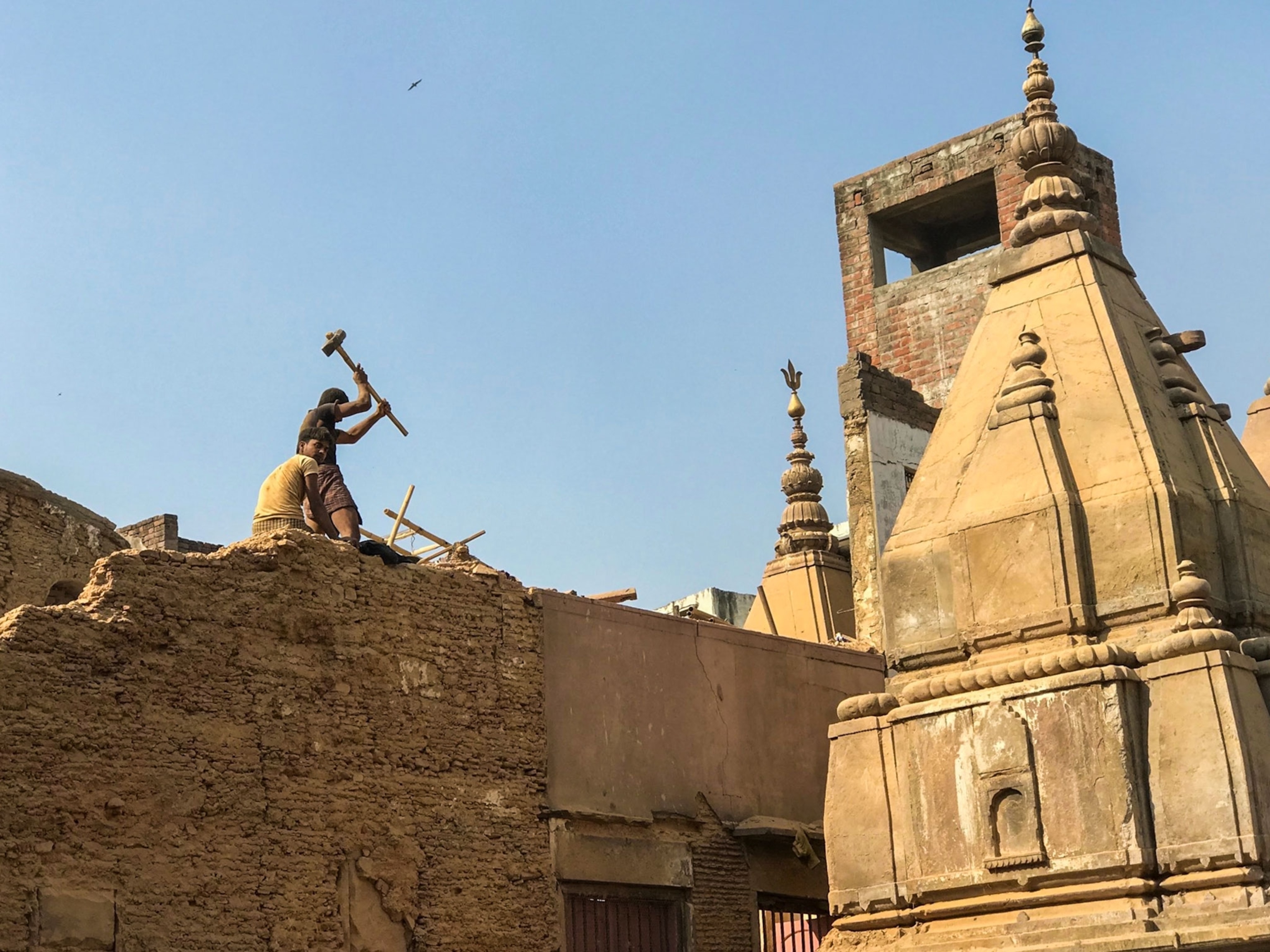
One of India's holiest cities is being reborn. Not everyone is happy
Urban renewal in Varanasi seeks to ease the way for the yearly multitude of pilgrims who visit this ancient city on the Ganges.
VARANASI, INDIA — We walked east along the Ganges until the river cut north like a steel sword across the plains to Varanasi.
India’s holiest city, the Jerusalem of Hinduism, was clouded in dust—in powdered brick, in powdered mortar. A worker army pummeled the walls of the Lahori Tula neighborhood with sledgehammers and crowbars, leveling its twisted maze of alleys and lopsided buildings. One of the city's most timeworn districts lay bombed out amid heaps of rubble. At night, spectral trains of mules and horses saddled with baskets carted away ton after ton of debris.

“Our master plan has changed,” Vishal Singh, the secretary of the Varanasi Development Authority, said of an ambitious new project to open pedestrian corridors for the hundreds of thousands of pilgrims who visit Kashi Vishwanath, the city’s most sacred temple, every year. To ease that congestion, entire city blocks in Varanasi were being razed to make way for gardens, lavatories, shops. Dozens of hidden shrines, some dating back centuries, were being discovered as residents’ homes toppled.
“At first it was going to be a swath of clear, clean land,” Singh said. “But we began finding smaller temples. Now all of these will be accessible by a complex of lanes.”
Singh sat in a business suit behind a large desk in an office with more than 20 empty chairs. Clerks came and went bearing documents for his signature. Some bent to his ear and whispered. A golden nandi garlanded in rose petals meditated atop the desk. Singh said 296 buildings would be demolished for the $85 million beautification plan. Thousands of local people were being displaced. They were offered compensation. Not many appeared happy.
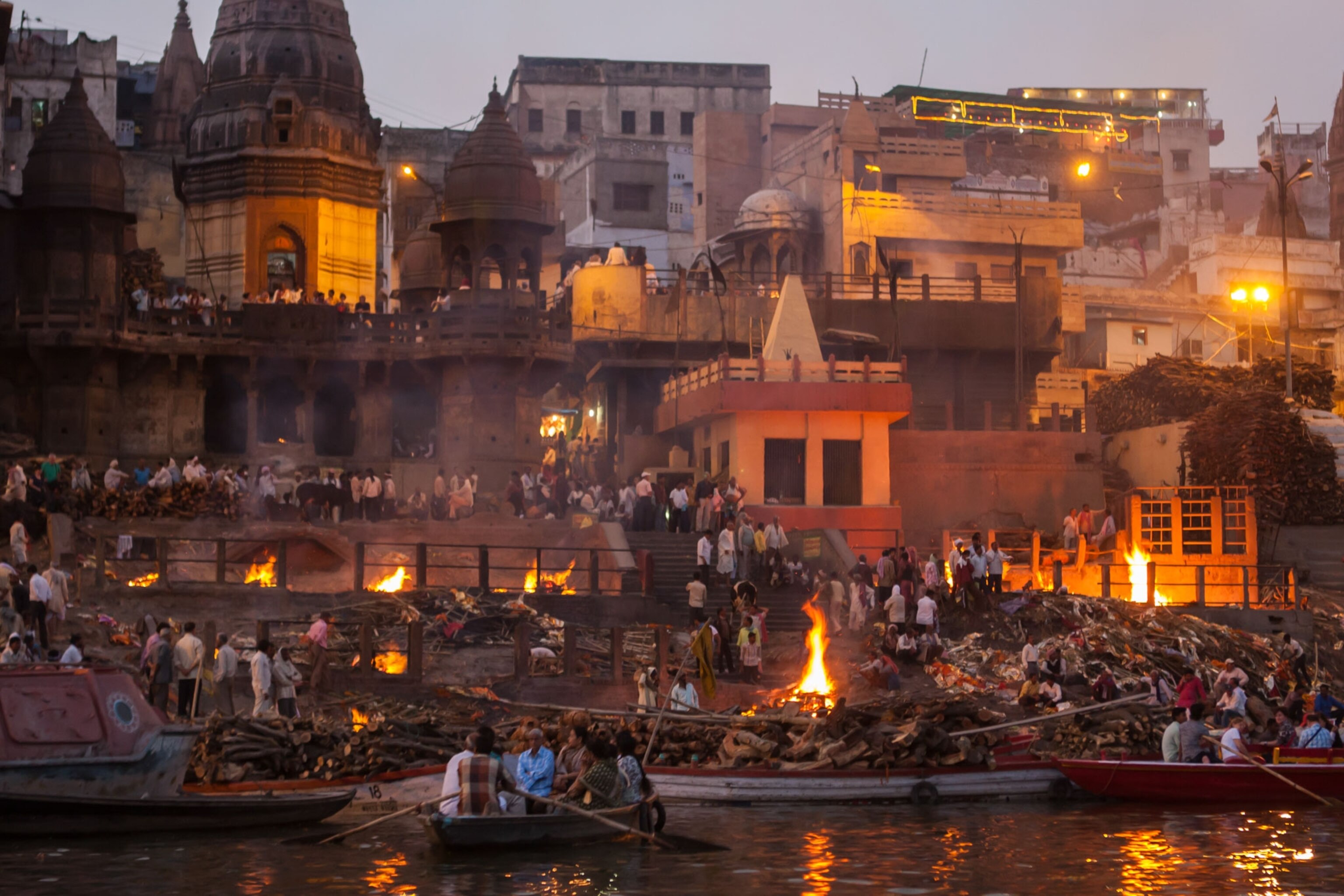
Varanasi is known among devout Hindus as Kashi, or the place “where the supreme light shines.” The city’s 88 ghats tumble down to the Ganges in beautifully worn steps. At their bottom, devotees wash away sin in the currents. Some 30,000 people a year are cremated at the ghats. The bodies of babies and holy men are floated down the river instead, or sunk there with stones, because they are blameless and don’t require the purifying fire. The Ganges here is inky with ash and sewage and festering with dead cows. But the religious drink the river because nothing can sully the purity of Ma Ganga, the river’s goddess who rides a crocodile. You can store Ganges water in a jar, and it will be potable 20 years later. (See a photographic pilgrimage along the Ganges.)
“Where are we supposed to live?” said Naresh Pandey, one of the thousands of Hindu priests who perform funeral rites at Varanasi’s burning ghats. “The government is taking our house. We have lived there for many generations.”
Pandey’s waterfront building in Lahori Tula was slated for destruction in the city’s redevelopment plan. He had fought eviction and failed. Like most destitute inhabitants of the historic neighborhood, Pandey’s family were renters. They had passed down a paltry rent-controlled payment from one generation to the next. The landlord was elated to unload his crumbling property on the government. Another saffron-robed priest who wouldn’t give his name said the beautification project would rip apart Varanasi’s antique social fabric. But he would support the erasure of his neighborhood, he said, if the government also tore down the Gyanvapi mosque.
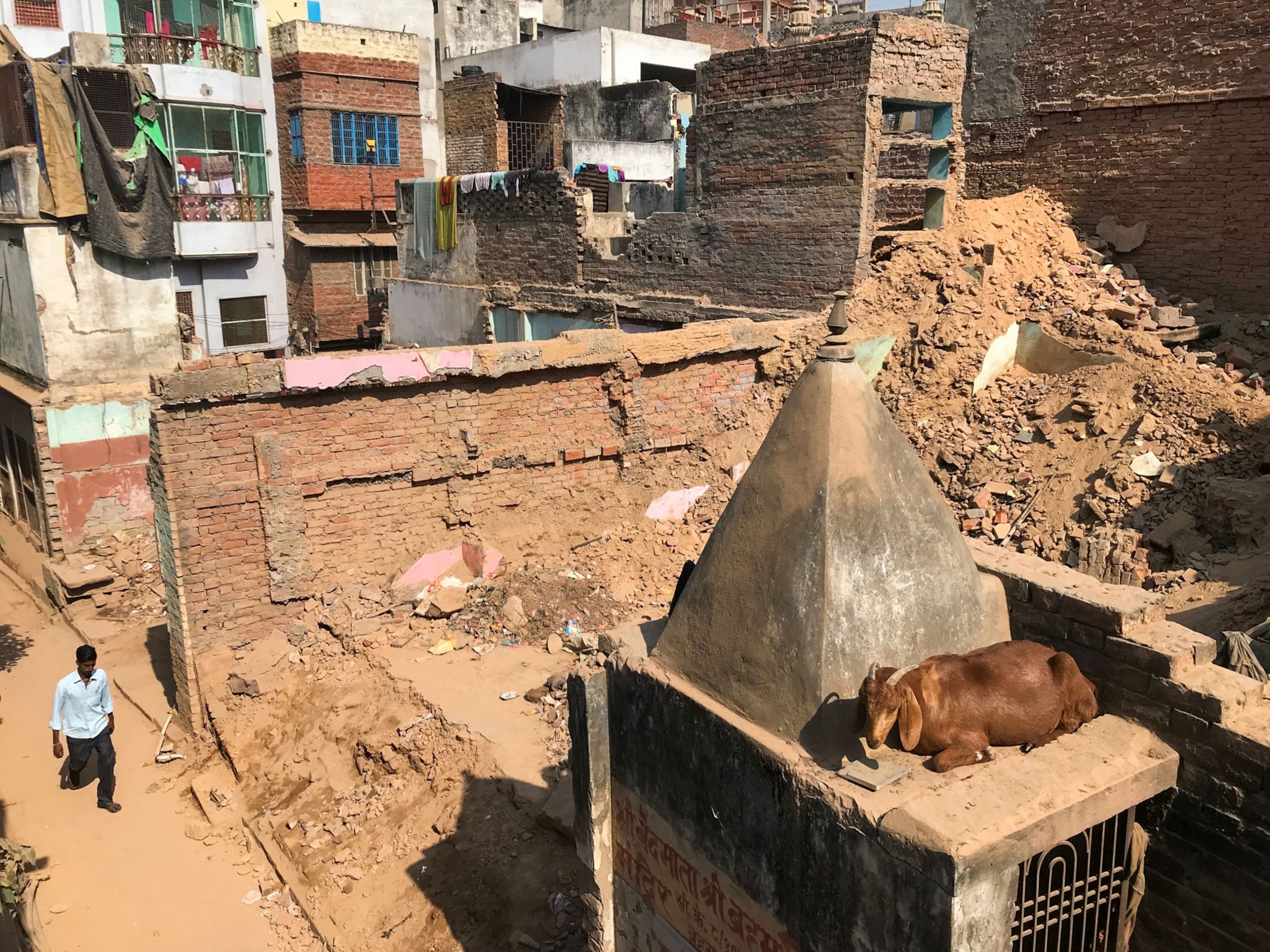
In 1669, the Mughal emperor Aurangzeb had razed the original Kashi Vishwanath temple at the center of today’s urban renewal project and erected the mosque atop it. Archaeologists conjecture that the famous Hindu temple had been destroyed and rebuilt at least five times.
Waving away pyre smoke at the riverbank, the homeless priest Pandey explained how the fires of Varanasi’s burning ghats were virtually eternal—rekindled from ember to ember across thousands of continuous years of cremations. To die and be cast into the Ganges at Varanasi, he said, was a guarantee of moksha, a liberation from the wearying cycle of earthly struggle, from repetition, from reincarnation, from the miseries of death and rebirth.
(Watch the pyres of Varanasi in this short film.)

